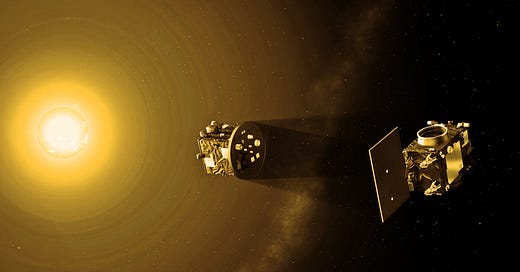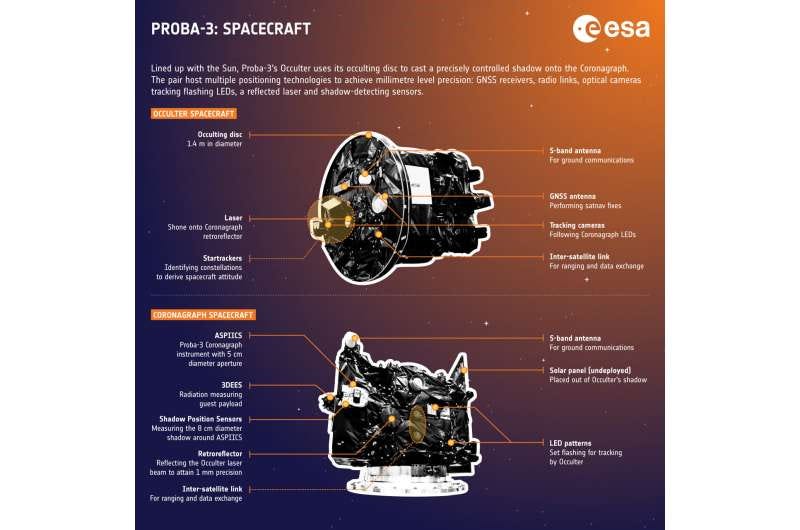Proba-3 achieved high precision formation flying!
This week is full of global achievements: launch licences, collaboration agreements and more!
Welcome to Aerospace Insider 🚀
Hope you are off to a good week. Let’s get to the news of the week.
Today’s summary:
🚀 Aerospace News: plenty of collaborations ahead
🔍 Deep Dive: Proba-3 achieved high precision formation flying!
Aerospace Weekly Roundup
Catch the latest European & global space industry highlights you don’t want to miss!
🤝 ESA and India to collaborate on human spaceflight
ESA and the Indian Space Research Organisation (ISRO) have signed an agreement to collaborate on human spaceflight. This partnership will focus on low Earth orbit activities and potential future missions to the Moon, including working on spacecraft interoperability and astronaut training. The agreement also opens the door for European astronauts to visit India’s future Bharatiya Antariksh Station. This collaboration comes as the US proposes scaling back its human spaceflight cooperation with Europe… encouraging ESA to seek stronger international partnerships.
🚀 Poland launches suborbital research rocket demonstrator
Poland has successfully launched a single-stage rocket demonstrator as part of a project to develop a three-stage solid-fuel rocket for research payloads. The project aims to create a rocket capable of carrying a 40-kilogram payload above 100 km. The recent test validated the rocket's navigation, control systems and other key components. The next test is planned for summer and will include a second stage.
🚀 Gilmour Space sets May 15 launch window
Gilmour Space Technologies has received approval from the Civil Aviation Safety Authority for the maiden launch of its Eris orbital rocket. Pending final approval from the Australian Space Agency, the launch window will open on May 15. The company has completed necessary preparations and is awaiting the formal launch permit. This follows a previous delay due to regulatory and weather issues.
🛰️ ClearSpace advances UK debris-removal mission
ClearSpace has completed the second phase of the UK Space Agency's Active Debris Removal mission, successfully testing technology to remove satellites from low-Earth orbit. The company's robotic system demonstrated resilience to launch conditions, and its image-processing algorithms effectively detected and tracked test space debris. The team also conducted proximity operations using a spacecraft emulator. This phase marks progress toward a UK-led in-orbit servicing capability, with ClearSpace and Astroscale competing for a 2026 contract to remove defunct satellites. The race is on.
🚀 FAA approves increased Starship launch frequency
The FAA has approved SpaceX to increase the number of Starship launches from its Starbase site in South Texas. The company can now conduct up to 25 launches and landings per year, up from the previous limit of five. This decision follows a review that concluded the increased launch cadence would not significantly impact the environment. SpaceX is working to address reliability issues before the next test flight, which could occur as early as May 19.
🌕 ispace achieves lunar orbit milestone
ispace's RESILIENCE lunar lander successfully entered lunar orbit on May 7, completing the seventh milestone of Mission 2. The manoeuvre involved a 9 minute thruster burn, placing the lander in a stable orbit. The next step is preparing for the lunar landing, scheduled for no earlier than June 5. The mission includes various payloads for commercial and scientific purposes, such as a water electrolyzer, food production experiment and a micro rover.
🔍 What caught your eye this week? I (try to) cover the best stories but there’s always more happening. Reply and let me know what space news you found most interesting or what I should cover next! I read all replies.
Space Jobs Spotlight
Remember that this jobs section has been moved into its own dedicated newsletter: Find a Space Job.
If you haven’t you, can sign up here
ESA’s Proba-3: Formation Flying Just Got Millimetric
For the first time in history, two satellites have autonomously flown in formation with millimetre-level precision, and held that position for hours without ground intervention. This is what the ESA’s Proba-3 mission has just demonstrated, achieving one of the key technical milestones in high-precision formation flying.
The achievement might sound niche, but its implications aren’t. Holding two spacecraft 150 m apart in space (aligned with the Sun and with sub-millimetric lateral control) is not easy. Most satellite missions are built around single spacecraft. But Proba-3 essentially turns two satellites into a single, virtual observatory: opening the door to entirely new classes of space science and infrastructure.
An artificial eclipse on demand
The immediate goal of Proba-3 is solar science. One satellite (the Occulter) carries a disk to block out the Sun’s light, while the other (the Coronagraph) captures the resulting artificial eclipse using, you guessed it, a coronograph. This setup allows scientists to observe the faint solar corona (the outer atmosphere of the Sun) for up to six hours at a time. That’s orders of magnitude longer than what’s possible during natural solar eclipses on Earth, and at a much higher resolution.
This type of relative formation flying has never been done in orbit before, certainly not with this level of autonomy. The spacecraft use a combination of laser measurements, LED-tracking cameras and light sensors to align themselves and adjust without any help from the ground (i.e., autonomously).
Why it matters?
While the science goal is important, it’s more of an excuse1 to attempt high precision formation flying. This capability enhances the scientific return of the mission, of course, but it’s also a prerequisite (or a platform, rather) for future missions involving:
Distributed space telescopes that could operate as a single optical system
Modular space infrastructure: in-orbit factories, perhaps?
Next-generation science missions with flexible, reconfigurable platforms
And probably many more I can’t think of now
What ESA and its industrial partners have done is show that this kind of fine control is possible using off-the-shelf tech and algorithms (no hyped AI involved).
And in a way, Proba-3 is also a reminder that Europe can still lead the way in space engineering when it focuses on targeted innovation. It’s a modest mission, built under ESA’s General Support Technology Programme (that is, with low budget, basically), but one that will likely be referenced in future formation-flying projects, both civil and military.
Proba-3 hasn’t yet shared its first solar corona image, that will come. But the spacecraft have already delivered what will likely be remembered as the mission’s defining achievement: proving that autonomous, millimetric formation flying in space is no longer theoretical.
Thanks for reading Aerospace Insider.
If you found this newsletter useful, feel free to share it with someone who might enjoy it.
And if you have any feedback or suggestions, just reply—I’d love to hear your thoughts.
You can also connect with me on LinkedIn here.
See you next week.
Jaime
Don’t ask the mission scientists about this, haha.





